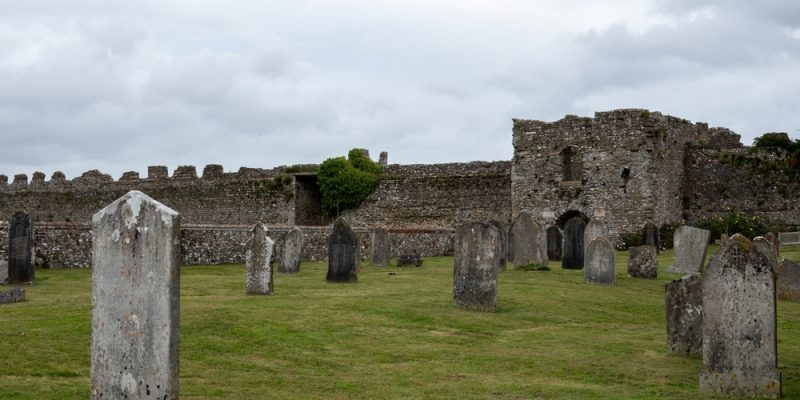
The History and Evolution of Grave Markers
Grave markers, those solemn symbols of remembrance dotting cemeteries worldwide, have a rich and varied history that spans millennia. These markers serve not only to identify the final resting place of the departed but also to communicate messages of love, respect, and cultural significance. From simple mounds of earth to elaborate sculptures, grave markers have evolved alongside human civilization, reflecting changes in religious beliefs, artistic styles, and memorial practices. This blog explores the fascinating journey of grave markers through time, tracing their origins, evolution, and enduring cultural importance.
Early Origins and Ancient Practices
Ancient Mesopotamia and Egypt
The practice of marking graves dates back to ancient civilizations such as Mesopotamia and Egypt, where elaborate burial rituals and beliefs in the afterlife necessitated clear demarcation of burial sites. In Mesopotamia, early grave markers were often simple stone slabs or stelae bearing inscriptions in cuneiform script, detailing the deceased’s lineage and accomplishments. Similarly, ancient Egyptian grave markers took the form of monumental structures like pyramids and mastabas, designed to safeguard the deceased’s soul and ensure eternal life in the afterworld.
Classical Antiquity: Greece and Rome
In classical antiquity, particularly in Greece and Rome, grave markers evolved into more personalized forms. Greeks commonly used stelae adorned with intricate reliefs depicting scenes from the deceased’s life or mythological motifs. These markers served not only as memorials but also as a means of commemorating achievements and reinforcing familial lineage. Roman grave markers, known as columbaria, were often erected along roads leading out of cities, featuring inscriptions and portraits of the deceased to honor their memory and perpetuate their legacy.
Medieval and Renaissance Europe
Christian Influences and Symbolism
With the spread of Christianity across Europe during the Middle Ages, grave markers took on new forms imbued with religious symbolism. Simple crosses marked early Christian graves, emphasizing faith and salvation in the afterlife. During the Renaissance, grave markers became more elaborate, reflecting advancements in art and architecture. Intricately carved effigies and tombs adorned with biblical scenes became common, serving as symbols of wealth, status, and devotion to faith.
Memento Mori: Reminders of Mortality
The Renaissance also popularized the “memento mori” motif, reminding the living of their mortality. Gravestones often featured symbols like skulls, hourglasses, and winged angels, symbolizing the transience of life and the inevitability of death. These markers aimed not only to memorialize the deceased but also to prompt contemplation and spiritual reflection among the living.
Modern Era: Industrialization and Cultural Diversity
Industrial Revolution and Mass Production
The advent of the Industrial Revolution in the 18th and 19th centuries revolutionized grave marker production. Mass-produced marble and granite replaced hand-carved stone, making grave markers more affordable and accessible to a broader swath of society. Standardization in design emerged, although regional and cultural variations persisted, reflecting diverse beliefs and traditions.
Cultural Diversity and Personalization
In the 20th and 21st centuries, grave markers increasingly reflect cultural diversity and individuality. Different religious and ethnic communities incorporate unique symbols, languages, and rituals into their grave markers, honoring specific beliefs and customs. Personalization has become key, with families opting for customized markers that celebrate the unique life and personality of the deceased, from engraved portraits to quotes and even QR codes linking to digital memorials.
Contemporary Trends and Sustainability
Green Burial Movement
In recent years, the green burial movement has gained momentum, advocating for eco-friendly alternatives to traditional grave markers. Biodegradable materials such as natural stone, wood, and even living trees are becoming popular choices, emphasizing sustainability and environmental stewardship in memorial practices.
Digital Memorials and Virtual Legacies
Advancements in technology have introduced new forms of memorialization, such as digital memorials and virtual legacies. Websites and apps allow individuals to create online tributes, share memories, and preserve the legacy of the deceased in digital formats. These platforms supplement traditional grave markers, offering a lasting digital footprint accessible to global audiences.
Conclusion
Throughout history, grave markers have evolved from simple stone slabs to multifaceted expressions of cultural, religious, and personal identity. They serve as tangible connections to the past, preserving memories and honoring the lives of those who have passed on. As society continues to evolve, so too will the forms and functions of grave markers, ensuring that the tradition of remembrance remains a timeless aspect of human civilization.
Need Monument Makers in Phillipsburg, NJ?
Welcome to Phillipsburg Memorial Company! Phillipsburg Memorial Company has been the premier memorial company for Phillipsburg, NJ and the surrounding area since 1939. We are family owned and operated, and have been providing customers with exceptional service that continues to resonate. Phillipsburg Memorial Company offers a variety of services that include granite memorials, bronze plaques, and cemetery lettering and cleaning. Our reputation for professional service, dependability, and craftsmanship are hallmarks of our service we provide to each of our customers. Phillipsburg Memorial Company is a proud member of The National Federation of Independent Business. Call, email, or come by our office for your free consultation!
Categorised in: Grave Markers